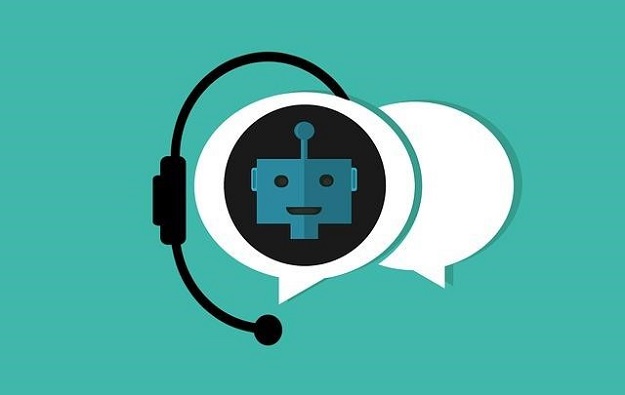Conversational Marketing Mistakes to Avoid in the New Year

Marketing has always been an early adopter of new ideas. The current buzzword that is making the rounds (and becoming a trend on marketing plans) is conversational marketing. One of the main drivers for this trend is AI chatbots powered by machine learning. However, before you integrate a chatbot into your website and call it a day, you should first be aware of the many conversational marketing mistakes to avoid. Unfortunately, many marketers who don’t know what they are doing use chatbots and automated customer conversations in ways that can harm their bottom line. Let’s take a look at what conversational marketing is and how to avoid the common pitfalls.
What is conversational marketing?
Although everyone seems focused on chatbots, conversational marketing is a broader term that includes more than just AI assistants. At its core, conversational marketing refers to a proactive marketing approach relying on customer feedback. You can use this feedback to improve engagement, help customers progress through the sales funnel, generate leads and grow the customer base, improve brand loyalty, and, most importantly – boost sales. Various traditional marketing techniques can fall under the umbrella of conversational marketing:
Chatbots
Email marketing
Customer support
Loyalty and rewards programs.

AI chatbots are common in conversational marketing.
Six Conversational Marketing Mistakes to Avoid in the New Year:
As you can see from our description, AI chatbots are just one of the many ways to use customer conversations to help improve sales. The following mistakes may occur when using chatbots; however, you can also commit them in any customer interactions. Without further ado, here is what you should avoid in conversational marketing:
1. Changing Your Marketing to Include the Flavor of the Month
Naturally, trends will come and go, and there will always be something new that everyone is discussing. Experienced marketers know they should always keep one ear to the ground and be on the lookout for a new trend making the rounds. However, they also understand the difficulty and the costs associated with pivoting your entire marketing strategy to make it conform to new technology. Whenever you consider implementing something new, we suggest you perform extensive research. Afterward, you can start slowly by testing your new approach on less expensive forms of marketing, such as PPC or email marketing campaigns.
2. Forcing Chatting on Every Website Visitor
It would be best to remember that you cannot convert every website visitor. Some people are there to browse and don’t plan to buy anything yet. Even those visitors who make a purchase might need a bit of time to make up their minds first. Immediately forcing a chatbot with animations and sounds could be too much for some visitors. Instead of alienating part of your user base, perhaps you can implement chatting in a less intrusive way.
Overcrowding your homepage or landing pages with too much information is never a good idea for any digital marketing campaign. Greeting users who arrive on those pages with an irritating chatbot will only cause your bounce rate to skyrocket. New users who have just found your website probably need more information before they are ready to start a conversation. Give them some time to explore and look around. Avoid placing chatbots on any pages you want users to read. Starting a conversation on pages where you want users to perform specific actions will only draw their attention from your Call to Action button.
3. Know When and Where to Use Chatbots
AI bots aren’t a silver bullet that can solve all your problems. Although they can modernize the online experience, chatbots shouldn’t be the only thing you use to provide a positive customer experience and support while shopping. Ideally, you should be using any tool in your repertoire sparingly and with caution.
Rather than starting a conversation with each user on every page of your website, consider having conversations available for the right users at the appropriate times. Pages that lead to different areas of your website based on user intent are ideally suited for starting a conversation. Additionally, product specification and pricing pages can confuse some users. Those visitors have already expressed an interest in your products, so beginning a
conversation with them and answering their questions can help bring them closer to making a purchase.
4. Opening a Conversation with a Qualifying Question
One of the biggest conversational marketing mistakes to avoid is having the first lines of conversation be a qualifying question. For example, a travel agency shouldn’t immediately ask website visitors: ‘Hi, what’s your holiday budget?’ Although direct questions can help guide users to the best products suited to their needs, there is something essential you must
understand. No one wants to be marketed and sold to. If you start all your customer conversations this way, you will quickly realize that no one is opening your emails or engaging with your chatbot. The first rule of email marketing is that you shouldn’t talk about yourself. Instead, you should help them solve the problems they are experiencing by providing information and guidance.
5. Not Keeping Track of Customer Interactions
Having multiple channels for user conversations can be challenging to stay on top of things. You should implement a way to have all the information regarding a customer readily available. Create detailed customer profiles that track how they interact with your company through all the available channels. You can then use these insights and behavioral analytics to improve your chatbot and customer conversational marketing.
Thankfully, many software tools can help you manage your customer relations and interactions. Look for software tools that can help your business benefit from conversational CRM. When choosing the right software platform, you should consider your business needs. Depending on the sales volume and customer interaction level, you can decide on the appropriate CRM platform.
6. Pushing the Sale Too Soon
Regardless if you are using an AI chatbot or a sales rep, there is always a temptation to navigate the conversation to a prospective sale. However, suggesting a sale to a user who hasn’t expressed the intent to make a purchase can scare away potential customers. Try to get to know your customers and their needs in every conversation. Work on creating a relationship and remove the pressure of purchasing something. Be helpful and available, and never suggest a sale before your leads show genuine interest.
Wrapping Up
As you can see, implementing a chatbot without considering the conversational marketing mistakes to avoid can actively harm your bottom line. Follow the advice we’ve outlined here, and you will effortlessly improve customer satisfaction.
Images used:
https://pixabay.com/photos/tin-can-speak-talk-microphone-can-238488/
https://pixabay.com/vectors/customer-service-chatbot-7325332/
https://unsplash.com/photos/3Mhgvrk4tjM
https://pixabay.com/illustrations/chatbot-bot-assistant-support-icon-4071274/
Comments are closed.






